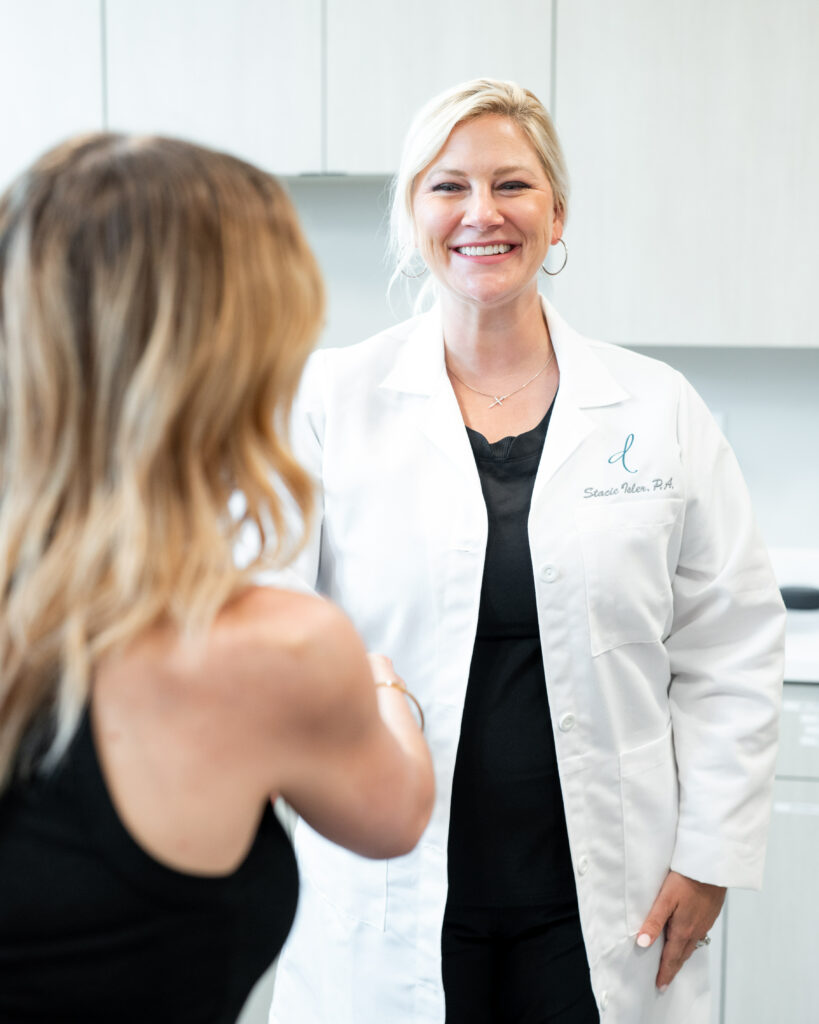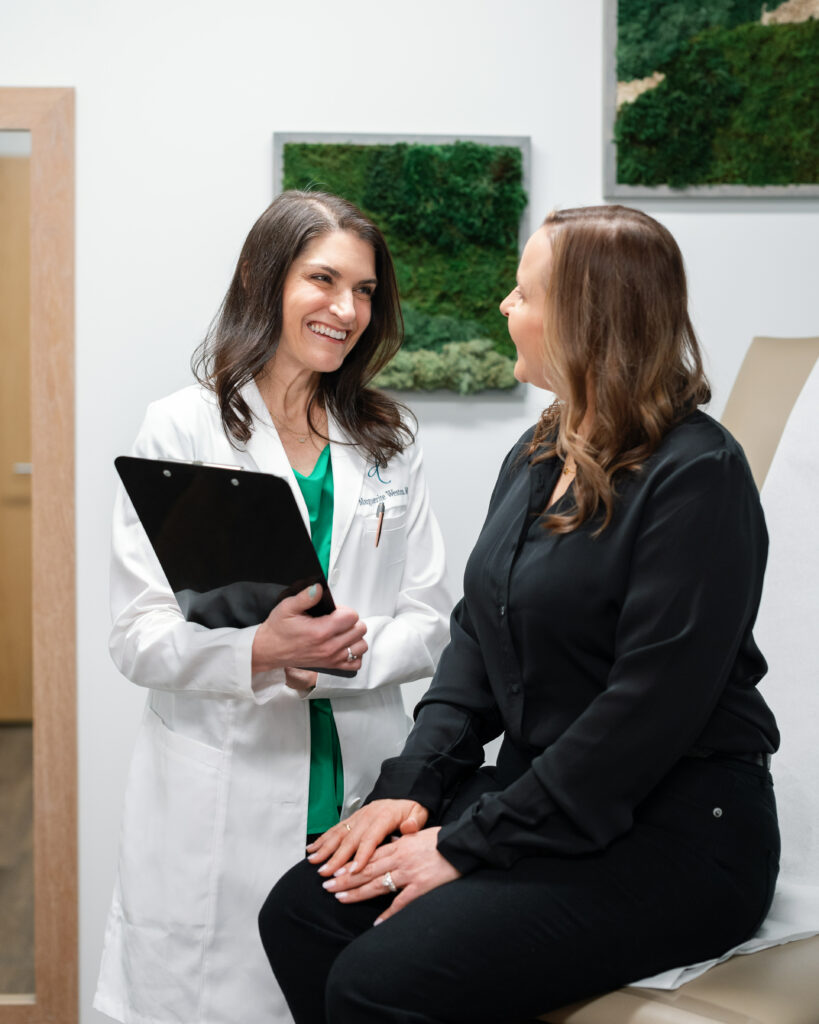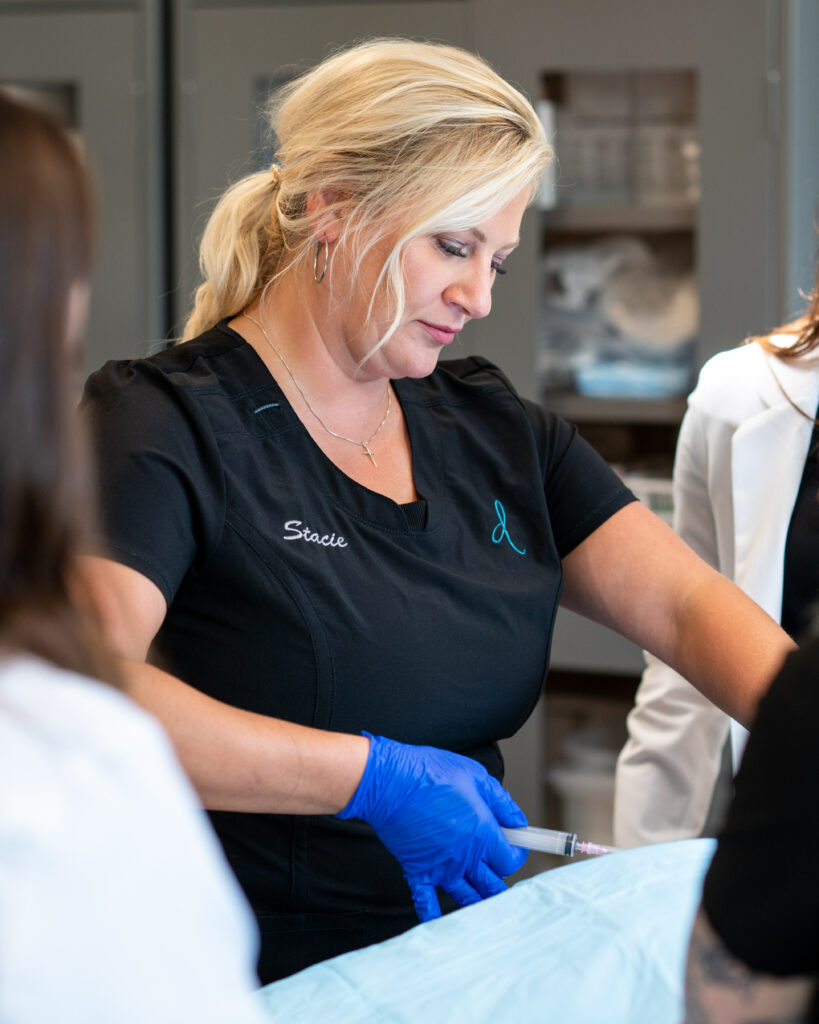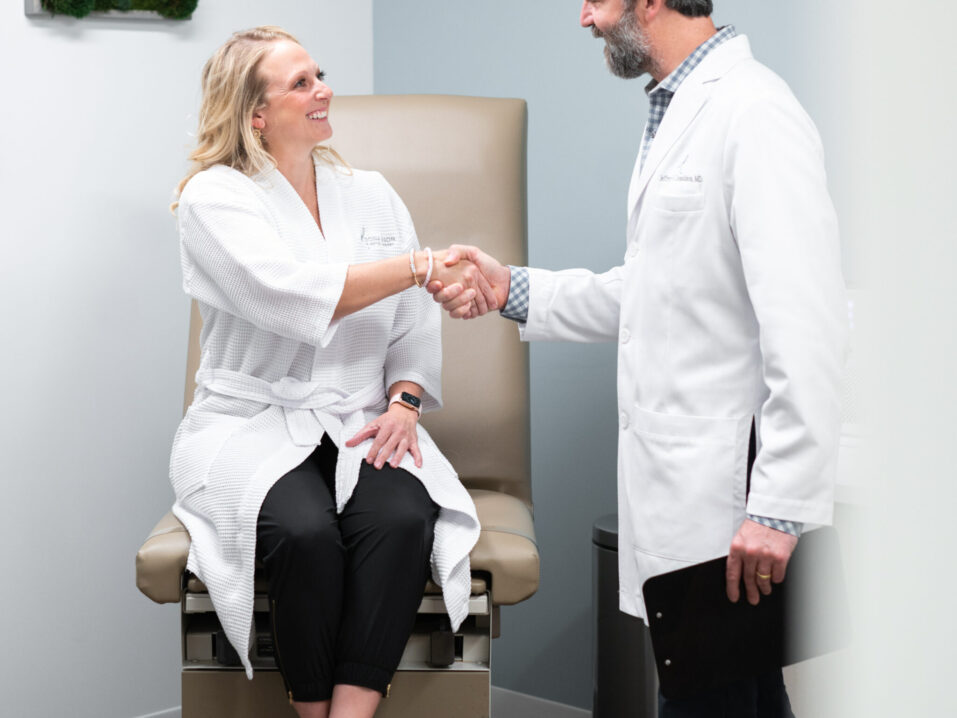Stress Incontinence Treatments For Women
Effective Solutions To Help Combat This Uncomfortable Condition

Stress incontinence is a common condition, affecting millions of people worldwide, but that doesn’t make it any less embarrassing or troubling for some patients. It can also create a financial burden for patients who have to purchase pads, disposable underwear or dry cleaning services as a result.
Fortunately, there are several methods available to effectively address stress incontinence, including surgical intervention, nonsurgical procedures and lifestyle changes.
There are four different types of urinary incontinence including urgency, functional, overflow and stress. We are focusing on stress incontinence and treatments for women to help address these symptoms.
What Is Stress Incontinence?
Stress Incontinence is a form of urinary incontinence that occurs when there is intra-abdominal pressure or stress placed on the bladder, causing involuntary leakage of urine. This can occur while performing normal daily functions like laughing, coughing or sneezing. A normal urethral sphincter and urethra can contract properly to prevent leakage. However, damage to muscles, ligaments and other anatomical structures can weaken this ability.
What Causes Stress Incontinence?
This condition is most often caused by pregnancy, childbirth, menopause, aging and obesity. There are technically two different types of stress incontinence; the first is caused by a hypermobile urethra and the other is brought on by a sphincter deficiency.
When it comes to urinary incontinence as a whole, women are twice as likely as men to suffer from these symptoms. Women also bare the brunt of the financial hardship associated with urinary continence, making up 76% of the $16 billion spent annually on costs related to the condition.

Lifestyle Changes & Physical Therapy
Lifestyle intervention is the first line of defense when it comes to reducing Stress Incontinence symptoms. Making these changes and seeking appropriate medical care can greatly improve the symptoms of incontinence and improve a patient’s quality of life.
These Changes Often Include:
- Kegel Exercises: Kegels are a type of pelvic floor exercise that strengthen the muscles that support the bladder and urethra. These exercises can help improve bladder control and reduce the frequency and severity of urinary leakage.
- Weight Management: As mentioned, being overweight or obese can contribute to extra pressure on the bladder and pelvic muscles. Losing weight through a healthy diet and exercise can reduce symptoms.
- Avoid Bladder Irritants: Certain foods and drinks, including caffeine, alcohol, and spicy foods, can irritate the bladder and worsen symptoms.
- Timed Voiding & Bladder Training: Developing a schedule for regular bathroom breaks can help reduce the likelihood of leakage. Gradually increasing the time between breaks can help retrain the bladder and improve control.
- Seek Physical Therapy: A trained physical therapist can teach exercises, unique to your body and situation, that specifically target the pelvic muscles and improve bladder control.
- Vaginal Pessary: This removable medical device can be used to support weakened, prolapsed or broken anatomical structures.
diVa: Leveraging Delicate Lasers To Stimulate Regrowth
Designed by a gynecologist, diVa is a vaginal rejuvenation treatment that uses hybrid fractional laser technology to rejuvenate vaginal tissue and function. This procedure also tightens the vaginal canal and strengthens the pelvic floor — both of which provide support to the vagina, urethra and bladder. Because of this, diVa can be used to treat mild cases of stress incontinence.

O-Shot: Harnessing The Power Of Your Own PRP
PRP for Sexual Wellness (or “The O-Shot“) is a popular nonsurgical treatment that primarily women experience an increase sexual function and desire. It can also be used to treat mild-to-medium cases of stress incontinence. A provider first draws blood from the patient before placing it into a centrifuge to separate the blood into three components: platelet-rich plasma, platelet-poor plasma and red blood cells. The potent platelet-rich plasma is placed into a specialized syringe before anesthesia is applied and the solution is injected into the clitoris and vagina.
How Does The O-Shot Minimize Incontinence?
PRP injections fuel cell growth. After an O-Shot treatment, cells in the clitoris and vagina have a rejuvenated blood flow and they begin to regrow stronger. These stronger cells not only help combat incontinence, but they also help increase orgasm intensity, boost vaginal lubrication and improve the skin texture of the vulva — among other positive results.
Colposuspension: Surgery To Reduce More Severe Cases Of Incontinence
Open Retropubic Colposuspension is an effective surgical procedure that involves creating an incision in your lower abdomen, elevating the neck of the bladder and using sutures to keep it in place. This added lift and urethra support can help decrease involuntary leaks or stop them completely. This surgery is typically performed under general anesthesia. There are three different variations of this surgery that include the Burch Method, Marshall‐Marchetti‐Krantz and Paravaginal Defect Repair.
We do not offer Colposuspension surgery at Donaldson Plastic Surgery. Patients should seek a professional opinion from an established Urogynecologist to help with more severe cases of stress incontinence.

About The Author
Stacie Isler, MS, PA-C, is an esteemed aesthetic service provider with rich experience inside and outside of the surgical operating room. She performs nonsurgical treatments, like the O-Shot and PRP for hair restoration, on a daily basis and has helped thousands of women feel more comfortable in their own skin.
Stacie strives to help educate patients around the country as they make the next steps on their personal self-confidence journey.
Related Articles

Read More Labiaplasty Under Local Anesthesia
Labiaplasty Under Local Anesthesia
Thanks to advances in surgical techniques & local anesthesia, labiaplasty can be performed to the same degree of excellence within the comfort of a private medical practice.

Read More 6 Things You Need To Know About Labiaplasty
6 Things You Need To Know About Labiaplasty
From some often-overlooked functional improvements to incredible aesthetic changes, here are some of the most important things you should know about the labiaplasty procedure!

Read More The Modified Wedge Labiaplasty Technique
The Modified Wedge Labiaplasty Technique
Dr. Jeffery Donaldson offers a modified approach to the already-beneficial wedge labiaplasty technique that uniquely offers a safer experience with less scarring and downtime.











